
Do you own a breed prone to back pain, like the popular French Bulldog or dachshund, and worry they might be suffering silently? Not sure what signs to look out for or how to help them? Fear not, we've got your back! In this comprehensive guide, we're breaking down everything you need to know about your dog's back health - from the basics of spinal anatomy and common injury causes to recognizing the signs of back pain. We also dive briefly into diagnosis methods, treatment options, and the most crucial prevention tip. Stay tuned to learn how to ensure your furry friend leads a comfortable and pain-free life.
Dog and cat breeds that are prone to spinal problems
Cats develop degenerative joints in their spine but are less likely to have acute spinal cord disc herniations as dogs do. The Manx cat is prone to issues in the lumbar spine due to its anatomy and stub tail.
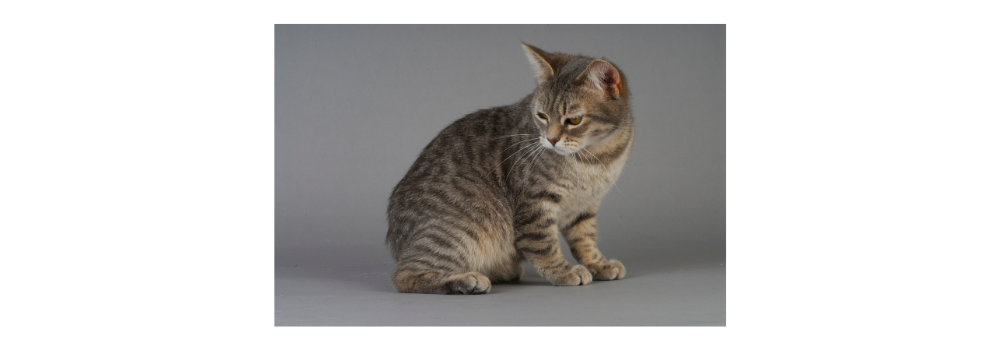
These are just some of the dogs most commonly affected by intervertebral disk disease. Think of dogs with relatively long backs in relation to their legs and anything that has been miniaturized. For example, hounds that are bred down to Beagle size, and Standard poodles that are bred down to miniature poodles.
-
Corgi
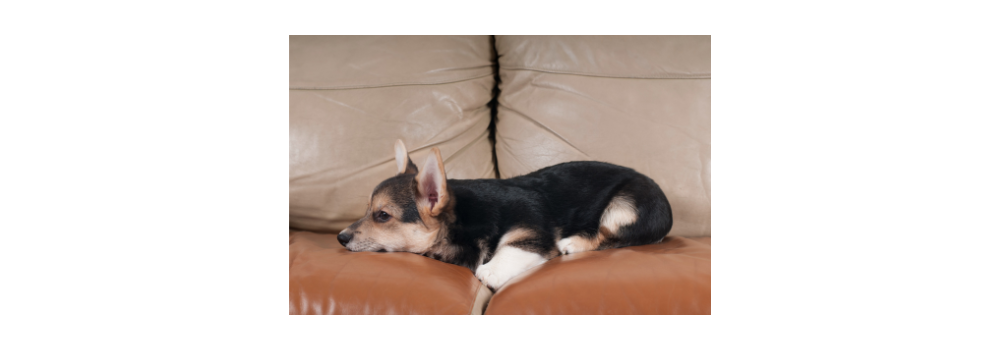
- Dachshund
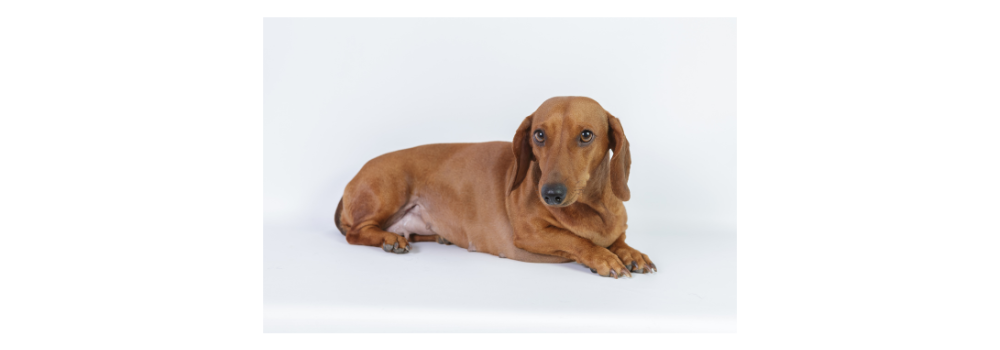
- Basset Hound

- Poodle
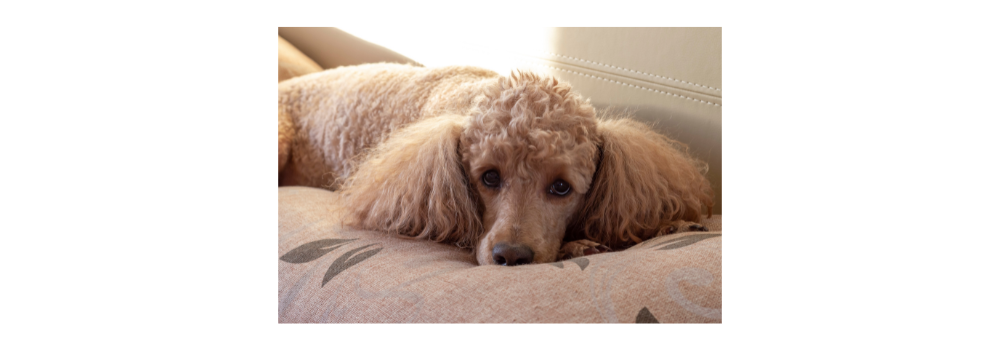
-
Bichon Frise

- Beagle
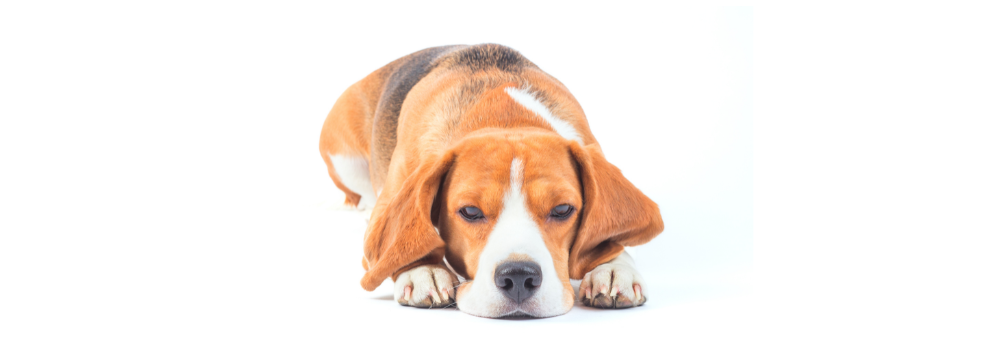
- Lhasa apso
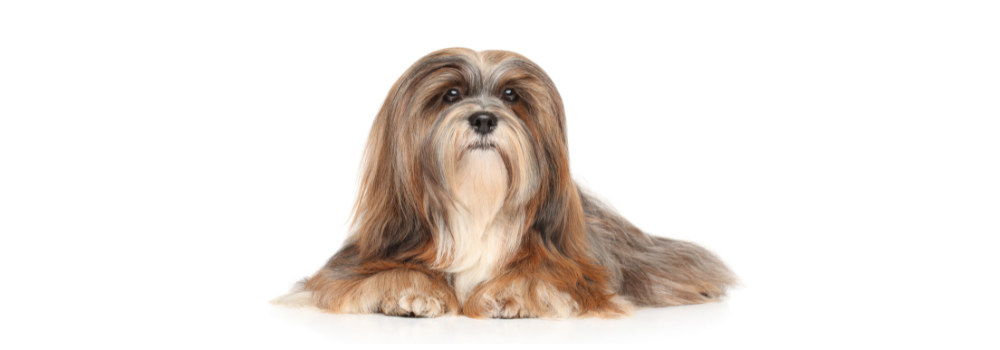
- French bulldogs, English bulldogs
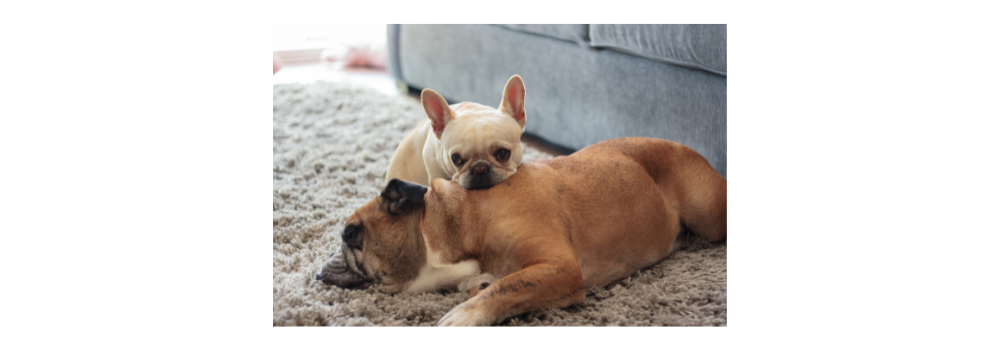
- German shepherds
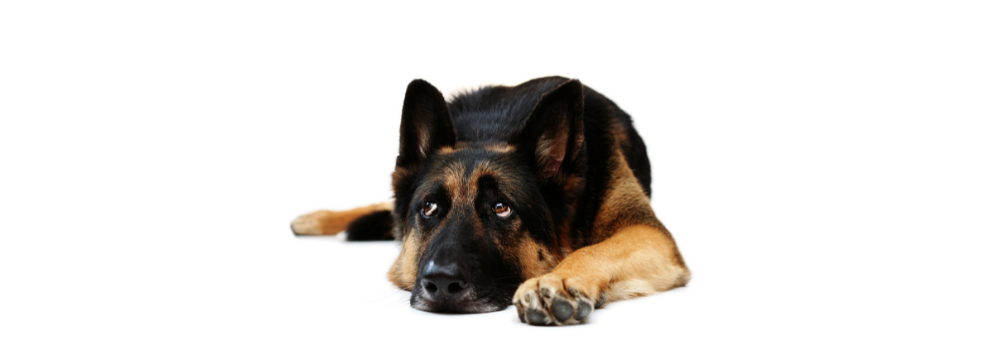
- Pekinese

Basic Anatomy of the Spine and intervertebral disc
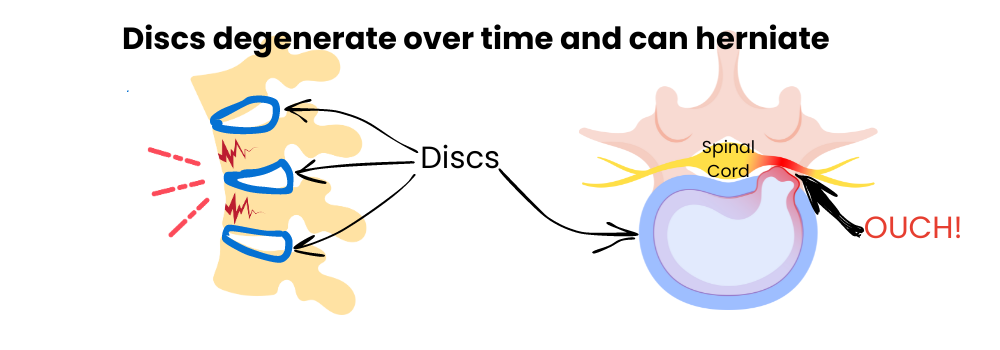
The spinal cord is protected by the vertebral bodies. The intervertebral disc is a cushion or shock absorber that is between each of the vertebral bones. Wear and tear on the fibrous exterior of the disk and the supporting dorsal longitudinal ligament can lead to disc herniation. This can happen over time and be a chronic and progressive condition, or it can happen abruptly.
#1 Emergency Takehome: When your dog loses function abruptly
Do not delay in getting help if your dog cannot hold it's weight up or is unable to move either the front or rear legs. Most dogs will exhibit some signs of back pain before they herniate a disc and lose motor function in their legs. Unfortunately, in some dogs, such as the French Bulldog, dachshund, and other dogs prone to disc disease, you don't have time to wait to intervene in the case of an acutely herniated disc. Time is of the essence to get a diagnosis. Go to an emergency veterinarian if your regular veterinarian is not available.
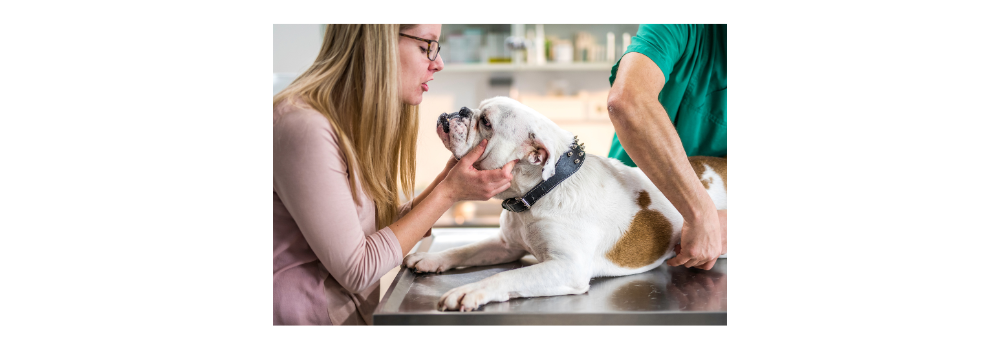
Cervical vertebral column
Disc herniations in this area can be very painful. You may find that your pet shies away from you, petting its head. Any dog that has ever had a cervical spinal cord compression or pain should always wear a harness and not a neck collar.
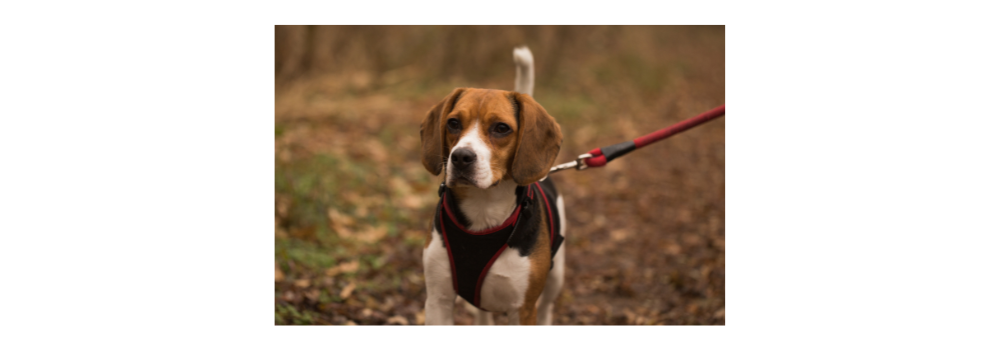
The Thoracic vertebrae differ
The thoracic vertebrae are stabilized by the ribs and associated ligaments. Intervertebral disc disease occurs when the ribs stop, and the lumbar spine begins. Dogs with issues in the thoracolumbar transitional area will sometimes have an arched spine. When a dog is picked up from the underside, and they cry, this can be attributed to a potential disc problem in this area, as lifting up from under will close the facets and impinge, which will impinge on the nerve roots. Many people will confuse this with leg pain.
The Lumbar spine and sacral vertebrae
Dogs withs lumbar spine issues may have a hunched appearance in the lumbar spine and they may not raise their tail, instead their tail carriage will be lower.
Pets with issues in the junction of the lumbar and sacral vertebrae area may exhibit signs of incontinence (both urinary and fecal).

What activities stress the spine?
- Jumping down from furniture, beds, the car
- Running downhill or racing down stairs
- Jumping straight up and down
- Jumping, turning, and impacting at the same time, such as catching a frisbee or ball
This illustration of the long-backed dachshund shows it jumping with the approximate location of the spine in red. Notice how the spine goes from flexion on the takeoff side to extension and, ultimately, hyperextension on the landing. The most wear and tear on the spine, especially in the vulnerable thoracic vertebrae, occurs when a dog lands in extension. This wear and tear can lead to disc herniation and, eventually, spinal cord compression.
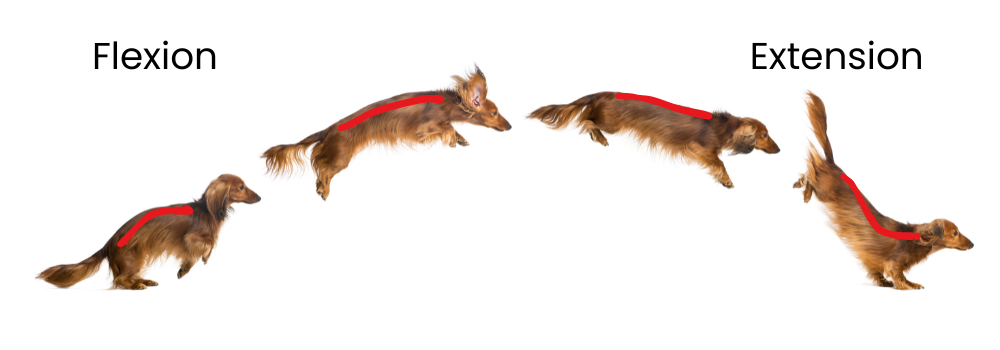
Below is an example of a dog jumping, turning, and impacting with hyper-flexion of the spine when they go to catch a frisbee. This is less likely to be a problem for dogs that are not prone to intervertebral disc disease. However, repetitive forces on the spine and precarious landings lead to wear and tear on both the knees and spine.
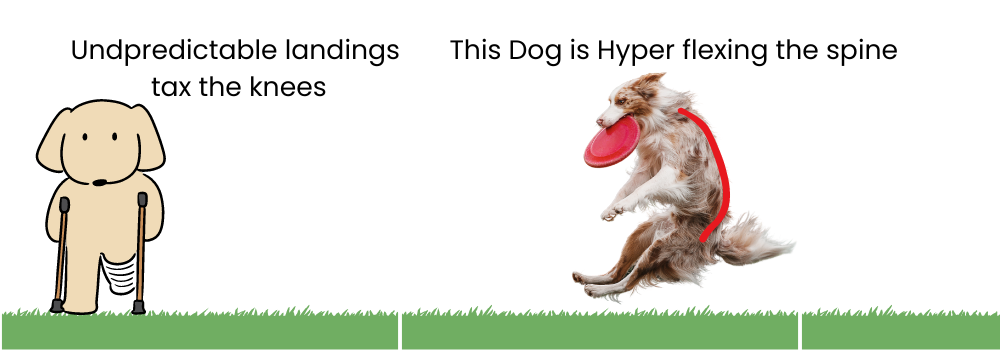
How do I know if my dog or cat is having back pain?
- Reluctance to jump (this is especially true for cats), get in and out of the car
- Unusual posture: A dog or cat with back pain might arch its back or walk hunched over
- Difficulty moving: reluctance to sit down or go up and down stairs, getting in and out of the litter box for cats
- Muscle spasms in the neck or back
- Loss of appetite: Pain can cause a decrease in appetite
- Changes in behavior: irritability or aggression
- Decreased grooming (especially in cats)
- Decreased social interactions
- Whining or crying: Vocalizing can be a sign of pain, but rarely do pets do this unless they have a "root signature," much like sciatica, where they experience pain radiating down one of their legs. They may appear to be running away from something
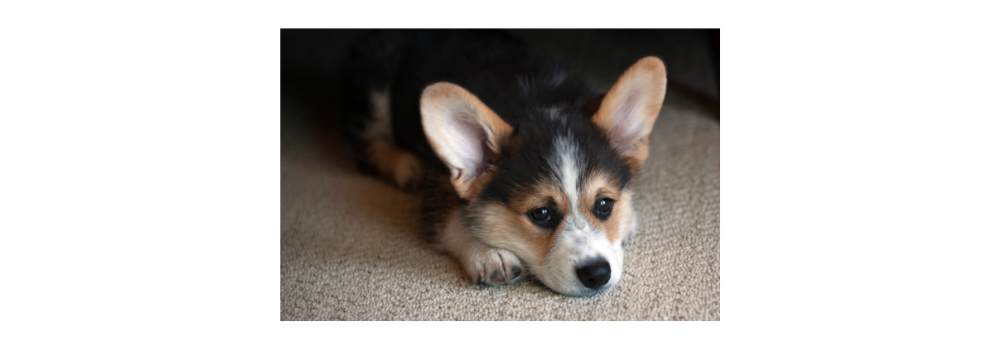
How do I get a diagnosis?
The first step in diagnosis is a comprehensive physical examination of the spine. The doctor will feel along the spine and check reflexes and conscious proprioception. This will show if nerves are compressed as the dog will not correct its paw when placed on its dorsal or top side. If a dog is acutely painful, many veterinarians will not take X-rays right away as they do not want the dog to struggle and herniate an already aggravated disc.

Many dogs that have x-rays are diagnosed with spondylosis deformans and evidence of intervertebral disc disease. Spondylosis deformans is a sign that there is wear and tear in an area and is not diagnostic for a disc issue. Only an MRI will reveal a disc issue.
Your veterinarian or emergency room veterinarian will recommend whether your dog needs to have further diagnostic studies such as magnetic resonance imaging or referral to a neurologist.
For the time being, keep your dog quiet, confined and prohibit any jumping. Ask your veterinarian for a referral to a rehabilitation specialist. They can teach you how to strengthen the core muscles that stabilize the spine.
Core Strength: What Is It?
Our core is comprised of the muscles that support and stabilize the frame of our body, particularly the abdominal, spinal, and pelvic muscles. These muscles are the cornerstones of physical activity and digestive regularity and provide a framework for us to maintain our pet’s overall health and well-being.
A strong core is supportive of physical activity and prevents degenerative disease. Think of a baseball pitcher generating enough energy to throw the ball without engaging the core muscles of his trunk and legs. He would surely be injured doing this in a repetitive fashion without the engagement of his core. A strong and conditioned core is the best way to prevent injury.
Getting Started: What can you do?
Core strength and body condition are elements of health often overlooked by even the most conscientious pet owner. Make an honest assessment of your pet’s physical condition. Is he or she at an appropriate weight? Excess fat deposits can be felt in the neck, over the ribs, and over the hips. Just as people fall into different categories (pear, apple, the ever-elusive hourglass), dogs do as well!
There should be minimal fat over the neck and rib cage. The ribs should be palpable but not visualized easily through the fur. You should be able to squeeze a roll of skin without excess fat and tissue between your fingertips. The hip bones adjacent to the spine should be felt easily when running your hands over the pelvic bones. They should be felt easily without “searching” or pressing down.
Signs of a weak core could include weakness and trouble when getting up and laying down. Dogs may “plop down” instead of going from a stand to a sit and lay down. They may have difficulty negotiating stairs and getting in and out of the car.
If you have concerns, consult with your veterinarian or a vet trained in rehabilitation/physical therapy for an exercise program suited to your pet’s physical condition. A veterinarian trained in physical rehabilitation can determine if there are issues with range of motion, atrophy, strength, gait, and comfort level. Once the deficiencies are identified, a program of therapeutic exercises and other potential modalities (e.g., therapeutic ultrasound, cold laser, electrical stimulation, acupuncture, chiropractic) can be employed.

Helping a dog with back pain
- Weight loss
- Pain medications
- Acupuncture
- Laser therapy
- Physical therapy/physical rehabilitation
- Spinal surgery for severe cases
Maintaining a strong core is a foundation for overall physical health. Making an investment in your pet’s physical core strength will pay off in the future, literally, as they will be less likely to get injured and require costly surgeries and medication. Keep your dog fit and trim by feeding them a healthy, minimal diet. I created Holistic Vet Blend to give pet owners flexible recipe options to make homemade diets.

You can download a mini cookbook for sample recipes here:












